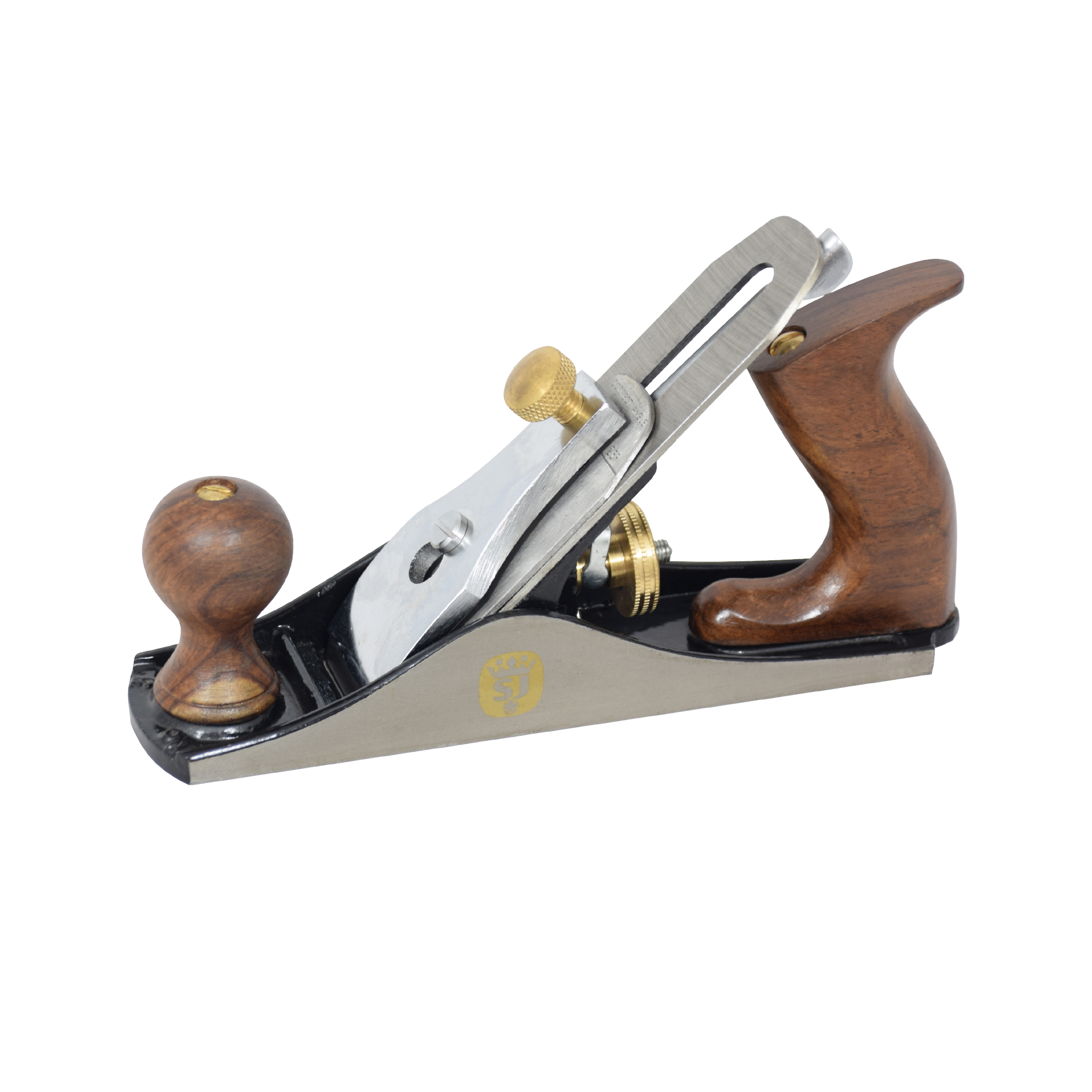Description
THIS PRODUCT: Block Length & Width: 110 x 44mm, Base Length: 234mm, Base Width: 55 x 38mm, Blade Width: 45mm. Smoothing Planes are Ideal for Cabinet Work & General Joinery, – Classically Designed with Rosewood, Stained Hardwood Handles & Brass Fittings, – Ductile Cast Iron Painted Gloss Black with Ground Sides & Bottom, – Blade Retaining Block: Ductile Cast Iron Painted Gloss Black, – High Carbon Steel Blade.
IN GENERAL: A smoothing plane is a hand tool used in woodworking for creating fine, smooth surfaces on wooden workpieces. It is designed to produce a glass-like finish, removing any imperfections, tear-out, or tool marks left by coarser planes. Smoothing planes are typically smaller and lighter than other hand planes, allowing for precise control and delicate shaving of wood. Here’s a brief description of a smoothing plane and some common uses:
Description:
- Blade and Cutting Angle: The blade of a smoothing plane is made of high-carbon steel and is set at a shallow cutting angle, often around 45 degrees relative to the sole (bottom) of the plane. This low angle minimizes tear-out and creates a fine finish.
- Sole and Body: The sole of a smoothing plane is flat and may be made of metal, wood, or a combination of both. The body of the plane is compact, with a slightly curved sole to prevent the corners of the blade from digging into the wood. Smoothing planes are designed for one-handed use and are easy to maneuver.
- Adjustable Blade: Smoothing planes typically have a blade adjustment mechanism that allows for precise depth control. This adjustment allows woodworkers to take very fine shavings, producing a polished surface.
- Handle and Knob: The handle and knob of a smoothing plane are usually made of wood and are ergonomically shaped to provide a comfortable grip. They allow the user to guide the plane smoothly and accurately.
Common Uses:
- Surface Smoothing: Smoothing planes excel at creating a smooth, flawless surface on wooden workpieces. They are used to remove any roughness, tear-out, or imperfections left by coarser planes or saws.
- Removing Tool Marks: Smoothing planes are effective at eliminating any tool marks, including those left by other planes, jointers, or saws, ensuring that the wood surface is perfectly smooth.
- Final Finishing: Smoothing planes are the last step in the woodworking process, producing a finely finished surface ready for staining, varnishing, or applying other finishes.
- Polishing End Grain: Smoothing planes can be used to polish end grain, making it smooth and ready for finishing, especially when making items like tabletops or panels.
- Fine Woodworking: Woodworkers use smoothing planes when working on fine woodworking projects, such as making furniture, cabinetry, musical instruments, and wooden objects where aesthetics and precision are paramount.
- Reducing Surface Roughness: Smoothing planes are employed to refine the surface of wooden components, reducing any surface roughness, undulations, or irregularities.
- Fine Adjustments: Woodworkers use smoothing planes for making fine adjustments to wooden parts, ensuring that they meet specific dimensions and fit together precisely.
- Smoothing Exotic Woods: Smoothing planes are particularly valuable when working with exotic woods that can be prone to tear-out when using coarser tools.
Smoothing planes are essential tools for achieving a high level of craftsmanship in woodworking projects. They provide woodworkers with the means to create beautifully finished surfaces that are ready for final assembly or finishing touches. Proper setup and maintenance, including keeping the blade sharp and the sole smooth, are crucial to ensure that a smoothing plane performs effectively in achieving a finely polished wood surface.


